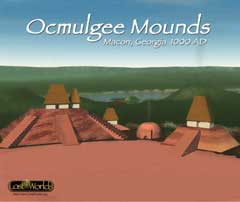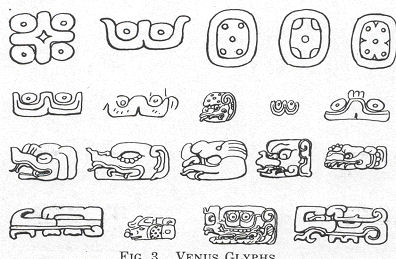Forsyth Petroglyph Reveals Comet Impact?
[Page 3 of 3]
References Cited
[i] Kobres, Bob. “Re: UGA Petroglyph may represent Comet Encke breakup in 536 AD.” Personal Communication. 15 April 2011.
[ii] The History of Forsyth County Georgia. Vol 1, 1985: p. 8-9. Accessed online 18 February 2010 at <http://abob.libs.uga.edu/bobk/rockpet.html>
[iii] White, ?. White’s Statistics of Georgia. 1849: pp. 255-56. Accessed online 18 February 2010 at <http://abob.libs.uga.edu/bobk/rockpet.html>
[iv] Jones, Charles C., Jr. Antiquities of the Southern Indians, Particularly of the Georgia Tribes. University of Alabama Press, 1999: pp. 377-378.
[v] Mallery, Garrick. “Picture Writing of the American Indians.” Bureau of Ethnology Report, No. 10. Government Printing Office: Washington, DC, p.76.
[vi] Mallery, Garrick. “Picture Writing of the American Indians.” Bureau of Ethnology Report, No. 10. Government Printing Office: Washington, DC, p.189.
[vii] Mallery, Garrick. “Picture Writing of the American Indians.” Bureau of Ethnology Report, No. 10. Government Printing Office: Washington, DC, p.198.
[viii] Mallery, Garrick. “Picture Writing of the American Indians.” Bureau of Ethnology Report, No. 10. Government Printing Office: Washington, DC, pp.196-197.
[ix] Perryman, Margarett. “Hunting Petroglyphs in North Georgia.” Early Georgia. The Society for Georgia Archaeology, 1950: Vol. 1, Issue 2.
[x] Daniels, Gary C. “Fort Mountain Stone Wall.” Ancient Civilizations of Georgia, LostWorlds.org, 2004. Accessed online 8 November 2009 at <https://www.lostworlds.org/fort_mountain.html>
[xi] Allison, David. “Possible Astronomical Symbols on “Sacred” Weeden Island Pottery. Early Georgia. The Society for Georgia Archaeology: June 2003, pp. 65-83.
[xii] Snow, Frankie. “Swift Creek Design Investigations.” A world engraved: archaeology of the Swift Creek culture. University of Alabama Press, Tuscaloosa, 1998: p.
[xiii] Smith, Betty A. “Swift Creek Culture.” New Georgia Encyclopedia. Accessed 28 November 2009. Accessed online 9 November 2009 at <http://www.georgiaencyclopedia.org/nge/Article.jsp?id=h-583>
[xiv] Loubser, Jannie, et al. “Recent Recording of Petroglyphs in Georgia.” The Profile, The Society for Georgia Archaeology, Winter 2002-2003: pp 3- 5. Accessed online 9 November 2009 at <http://thesga.org/category/publications/the-profile/winter-2002-issue/>
[xv] “Cup and ring mark.” Wikipedia.org. Accessed online 14 February 2010 at <http://en.wikipedia.org/wiki/Cup_and_ring_mark>
[xvi] “Circled dot.” Wikipedia.org. Accessed online 18 February 2010 at <http://en.wikipedia.org/wiki/Circled_dot>
[xvii] “Kudurru Melishipak Louvre Sb23.jpg.” Wikipedia.org . Accessed online 26 January 2010 at <http://commons.wikipedia.org/wiki/File:Kudurru_Melishipak_Louvre_Sb23.jpg>
[xviii] Allison, David. “Possible Astronomical Symbols on “Sacred” Weeden Island Pottery.” Early Georgia, June 2003: p. 68.
[xix] Kobres, Bob. “The case of carbonaceous catastrophes.” Accessed online 9 November 2009 at <http://abob.libs.uga.edu/bobk/caseof.html>
[xx] Jones, Charles C. Jr. Antiquities of the Southern Indians Particularly of the Georgia Tribes. University of Alabama Press, 1873: p. 377.
[xxi] Whipple, Fred L. “Photographic meteor studies. III. The Taurid shower.” Proceedings of the American Philosophical Society, 83, 711-745, 1940.
[xxii] Than, Ker. “Comet smashes triggered ancient famine.” NewScientist.com: 7 January 2009. Accessed online November 10, 2009 at <http://www.newscientist.com/article/mg20126882.900-comet-smashes-triggered-ancient-famine.html>.
[xxiii] Kobres, Bob. “Comets and the Bronze Age Collapse.” Chronology and Catastrophism Workshop 1992. Society for Interdisciplinary Studies, 1992: No. 1, pp. 6-10. Accessed online 12 August 2012 at <http://abob.libs.uga.edu/bobk/bronze.html>.
[xxiv] “Extreme weather events of 535-536.” Wikipedia. Accessed online 12 August 2012 at <http://en.wikipedia.org/wiki/Extreme_weather_events_of_535–536>.
[xxv] Baillie, Mike. “The case for significant numbers of extraterrestrial impacts through the late Holocene.” Journal of Quaternary Science. Wiley InterScience. Vol. 22, pp. 101-109. Accessed online 12 August 2012 at <http://tsun.sscc.ru/hiwg/pabl/baillie_2007_jqs.pdf>.
[xxvi] Baillie, Mike. “The case for significant numbers of extraterrestrial impacts through the late Holocene.” Journal of Quaternary Science. Wiley InterScience. Vol. 22, pp. 101-109. Accessed online 12 August 2012 at <http://tsun.sscc.ru/hiwg/pabl/baillie_2007_jqs.pdf>.
[xxvii] Baillie, Mike. “The case for significant numbers of extraterrestrial impacts through the late Holocene.” Journal of Quaternary Science. Wiley InterScience. Vol. 22, pp. 101-109. Accessed online 12 August 2012 at <http://tsun.sscc.ru/hiwg/pabl/baillie_2007_jqs.pdf>.
[xxviii] Baillie, Mike. “The case for significant numbers of extraterrestrial impacts through the late Holocene.” Journal of Quaternary Science. Wiley InterScience. Vol. 22, pp. 101-109. Accessed online 12 August 2012 at <http://tsun.sscc.ru/hiwg/pabl/baillie_2007_jqs.pdf>.




Pingback: Mayan Glyphs on… « Machimon